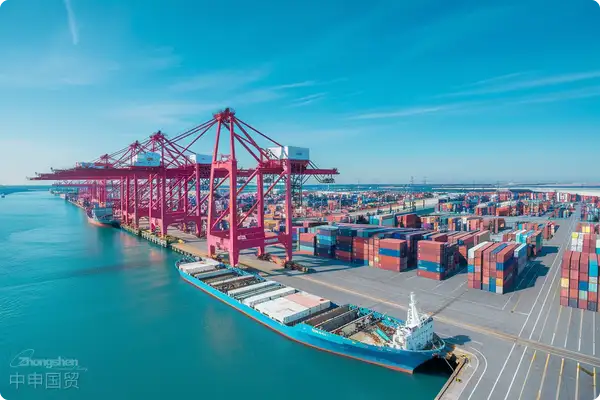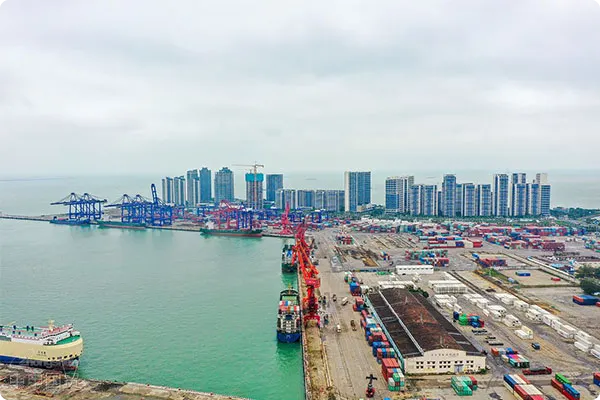- Shanghai Zhongshen International Trade Co., Ltd. - Two decades of trade agency expertise.
- Service Hotline: 139 1787 2118
Basic Knowledge of Tariffs
In the United States, the Customs and Border Protection (CBP) is responsible for collecting import tariffs. Tariffs are usually calculated based on the value of the goods. This type of tariff is called ad valorem tariff, that is, the tax amount is calculated according to the price of the goods. Generally speaking,the importer is responsible for paying the tariffsand needs to complete the relevant tax - paying process before the goods arrive in the United States.

The Specific Process of Paying US Tariffs
- Obtain an Import Code: The importer needs to obtain an import code, which is issued by the CBP and can be applied for through the CBPs website.
- Determine the HS Code of the Commodity: The importer needs to find the correct item (HS code) of the commodity and confirm the applicable tariff rate. The HS code is an internationally - used commodity classification system.
- Submit Relevant Documents: Before the goods arrive in the United States, the importer needs to submit relevant documents to the CBP, including invoices, shipping orders, etc., so that the CBP can calculate the tariffs.
- Customs Clearance: When the goods arrive in the United States, the CBP will conduct customs clearance on the goods, checking information such as the item and value of the goods.
- If the goods need to pay customs duties, the export enterprise needs to pay the customs duties as required by the customs. The calculation methods of customs duties include ad valorem and specific duty. Ad valorem means calculating customs duties according to the value of the goods, and specific duty means calculating customs duties according to the quantity of the goods.The importer needs to pay the customs duties on the CBP website or pay the CBP through other means such as credit card or check.
It should be noted that some goods may require an import license or comply with other trade restrictions. In addition, the import tariff rate may be adjusted at any time due to policy changes. Therefore, importers need to be sensitive to policies to avoid unnecessary risks and costs.
How to Determine the Import Tariff Rate?
Find the HS code of the goods
First of all, to determine the tariff rate of the goods, you need to find the correct HS code of the goods. The HS code (Harmonized System Code) is a commodity classification system used in international trade, through which the tariff rate of the goods can be accurately found.
Use the Harmonized Tariff Schedule of the United States (HTSUS)
The Harmonized Tariff Schedule of the United States (HTSUS) is the main tool for determining the tariff rate, which lists in detail the import tax rates of various types of goods. You can visit the HTS online query tool of the United States International Trade Commission (USITC) and enter the HS code or keywords of the goods to find the corresponding tax rate.
Consider special trade agreements and special tariffs
- Most - Favored - Nation (MFN) Tariff RateIt applies to countries that have normal trade relations with the United States and is usually listed in the Column 1 - General of the HTSUS.
- Special Tariff ProgramsFor example, free trade agreements signed by the United States with some countries may enjoy tariff reductions or exemptions.
- Additional TariffsSome goods may be affected by anti - dumping duties, counter - vailing duties or other special tariffs and need special attention.
Calculation Method of Import Tariffs
The amount of import duties can be calculated by the following formula:
Customs Duty Amount = Declared Value × Tariff Rate
- Declared ValueIt is usually the transaction price of the goods, that is, the price actually paid or to be paid by the buyer.
- Tariff rateThe tax rate obtained according to the HTSUS.
Example:
If you import a batch of goods with a declared value of $10,000 and a tariff rate of 5%, then the customs duty amount is:
Customs Duty Amount = $10,000 × 5% = $500
How to Pay Import Tariffs?
Pay through the importer or customs broker
- Payment on behalf of the importer or customs brokerUnder normal circumstances, the import duties are paid on behalf of the importer by the importer or its designated customs broker.
- ProcessThe importer needs to submit an import declaration. The customs system will calculate the payable customs duties, taxes and other fees based on the declaration information. The importer or its agent pays the customs duties to the CBP through electronic payment.
Use the electronic payment system
- ACH (Automated Clearinghouse)It is an electronic funds transfer system that allows importers to pay customs duties directly from their bank accounts to the CBP.
- Single - payment (Daily Statement)The importer can arrange the payment of customs duties on a daily basis through the customs broker or by itself.
Pay through the customs broker
Professional customs brokers can handle customs clearance, customs duty calculation and payment on behalf of importers. The advantages of this method are:
- ProfessionalismCustoms brokers are familiar with customs regulations and procedures, which can reduce the risk of errors.
- EfficiencyThe professional services of customs brokers help to speed up the customs clearance process and ensure the timely release of goods.
Other Fees to Be Paid
In addition to import duties, importers also need to consider the following costs:
- Merchandise Processing Fee (MPF)The rate is generally 0.3464% of the declared value, with a minimum of $27.23 and a maximum of $528.33.
- Harbor Maintenance Fee (HMF)ForMaritime Transportationgoods, the rate is 0.125% of the declared value.
- Excise Tax and Special TaxSome goods, such as alcohol, tobacco, and petroleum products, may be subject to federal excise taxes.
- Anti - Dumping Duties and Counter - Vailing DutiesIf imported goods are determined to be dumped or subsidized, additional taxes may be levied.
Conclusion
When conducting import trade in the United States, understanding and complying with tariff - related regulations is the key to ensuring the smooth progress of business. Correctly determining the HS code of goods, using the HTSUS to find the tariff rate, preparing relevant declaration documents, and choosing the appropriate way to pay customs duties can all help you reduce customs clearance risks and improve customs clearance efficiency. In addition, importers should be sensitive to policies to respond to possible policy changes at any time, so as to avoid unnecessary risks and costs.
I hope this guide can help you better understand the relevant processes and precautions of US import tariffs.foreign tradeDuring the process, every step requires our careful operation. I wish you every success in your import business!
Related Recommendations
Knowledge Base
Contact Us
Email: service@sh-zhongshen.com
Related Recommendations
Contact via WeChat

? 2025. All Rights Reserved. 滬ICP備2023007705號-2  PSB Record: Shanghai No.31011502009912
PSB Record: Shanghai No.31011502009912









